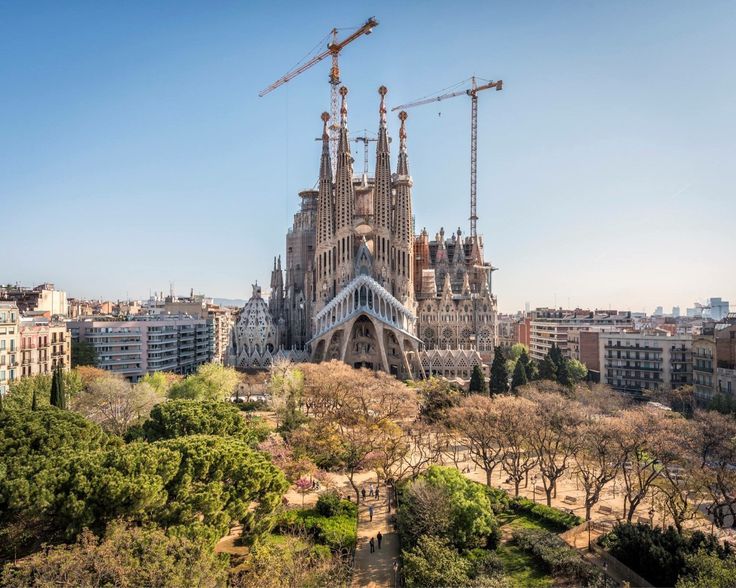Gaudi´s Sagrada Familia in Barcelona
The Sagrada Familia, which is a Roman-Catholic basilica, is Barcelona’s most famous landmark. Its official Catalan name is “Temple Expiatori de la Sagrada Família” which means “Temple of Atonement of the Holy Family” in English. Construction work began in 1882 and was later lead by Antoni Gaudí in 1883 who introduced the art style of Modernisme into the design of the basilica. The Sagrada Familia became his life’s work, in which he continued to build until his death in 1926. The Sagrada Familia is projected to be completed on Gaudí’s 100th death anniversary in 2026. The construction of the Sagrada Familia is exclusively financed by donations and funds from foundations and Catholic groups. The Sagrada Familia boasts of unbelievable spatial dimensions, complex embellishments, and magnificent facades & doors- and it should have 18 bell towers by the completion of the construction. On 7 November 7th 2010, Pope Benedikt XVI consecrated the Sagrada Familia and elevated it to the status “basilica. ”
Opening Hours of the Sagrada Familia
Monday-Sunday: 9 am – 6 pm
25th and 26th December, 1st und 6th January: 9 am – 2 pm
The Sagrada Familia is one of the most popular sights in Barcelona and it is also a central meeting point for many tourists. You can explore this imposing work of architecture all-year round during its opening hours. From November to February the opening hours of the Sagrada Familia begin at 9 am in the morning and you have until 6 pm during these colder months to get an impression of all the art works in the basilica. The Sagrada Familia also offers visitor-friendly opening hours from April-September, in which its doors are open from 9 am to late in the evening at 8 pm. Because of these generous opening hours, you have the flexibility to plan your visit to the basilica to your individual needs. In March and October, the opening hours also begin at 9 am, but it closes around 7 pm, which offers a well-rounded end to your day in Barcelona.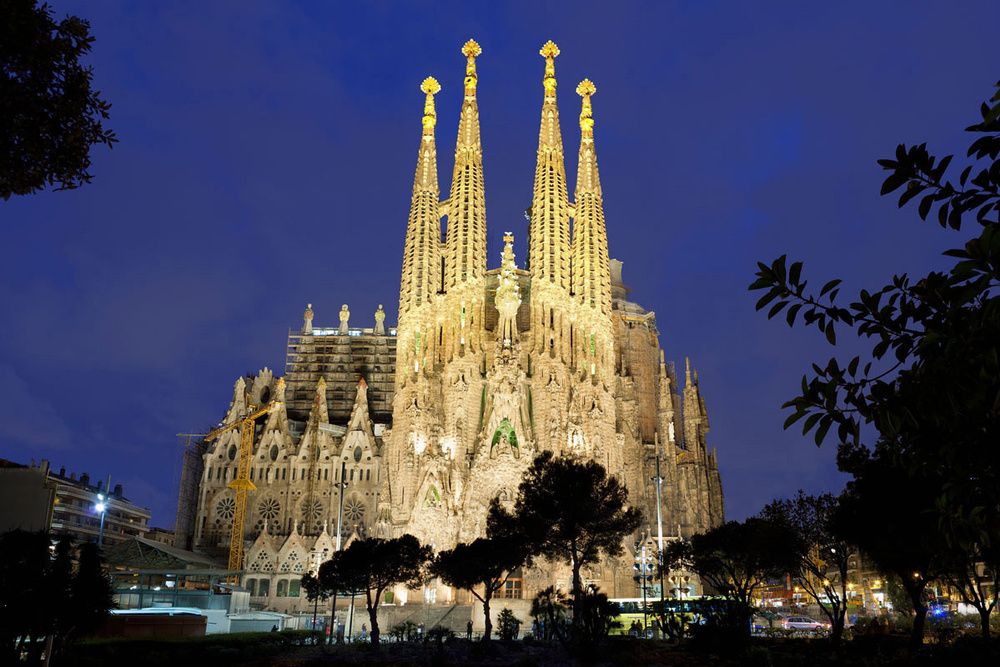
Please note that last admissions into the basilica take place 15 minutes before the end of opening hours. We suggest that you plan at least 1 hour for your visit to this famous basilica.
Sagrada Familia tickets
With your practical Barcelona City Pass you can experience the Sagrada Familia (if booked) for FREE. Before you even depart for Barcelona, you will receive your ticket into this famous basilica (if booked), as well as tickets to other top attractions and famous sights in one complete package. Your public transport ticket is also a fixed component of the Barcelona City Pass that gives you a wonderful head start to having a relaxing stay in the Spanish metropolis. This City Pass is your perfect Barcelona tourist card.
Address of the Sagrada Familia
Address:
La Sagrada Familia
Carrer de la Marina 253
08013 Barcelona
+34 932 08 04 14
Click here
to see on google maps
The Sagrada Familia is located not only in the heart of Barcelona, but also in the most famous city district of the Spanish capital, Eixample.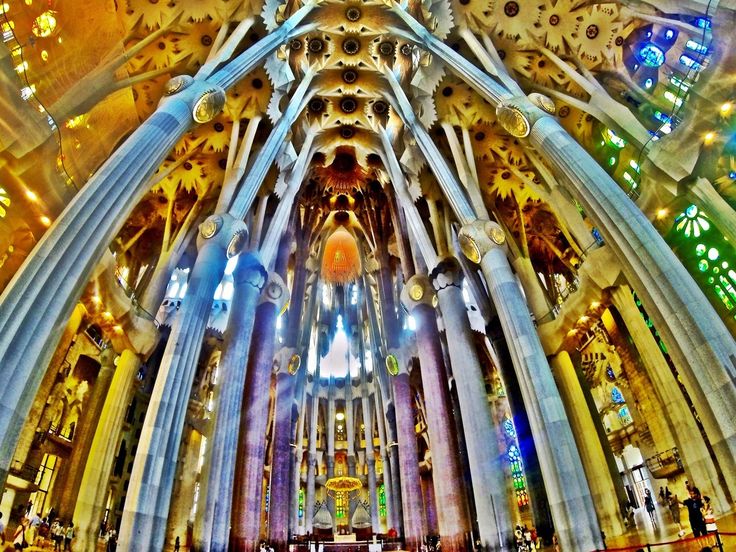
Another highlight which can be reached easily with public transport is the great observation deck Mirador de Colom which is also included in your Barcelona City Pass. It offers a great view over the city and the harbor of Barcelona.
Directions to the Sagrada Familia
L2 or L5 to Sagrada Familia
Bus 19, 33, 34, 50 or 51 to Mallorca – Nàpols
Bus B24 to Sagrada Familia
The Sagrada Familia is generally well connected to the public transportation system of Barcelona. Because of this, you have many travel options to choose from to reach the famous Sagrada Familia.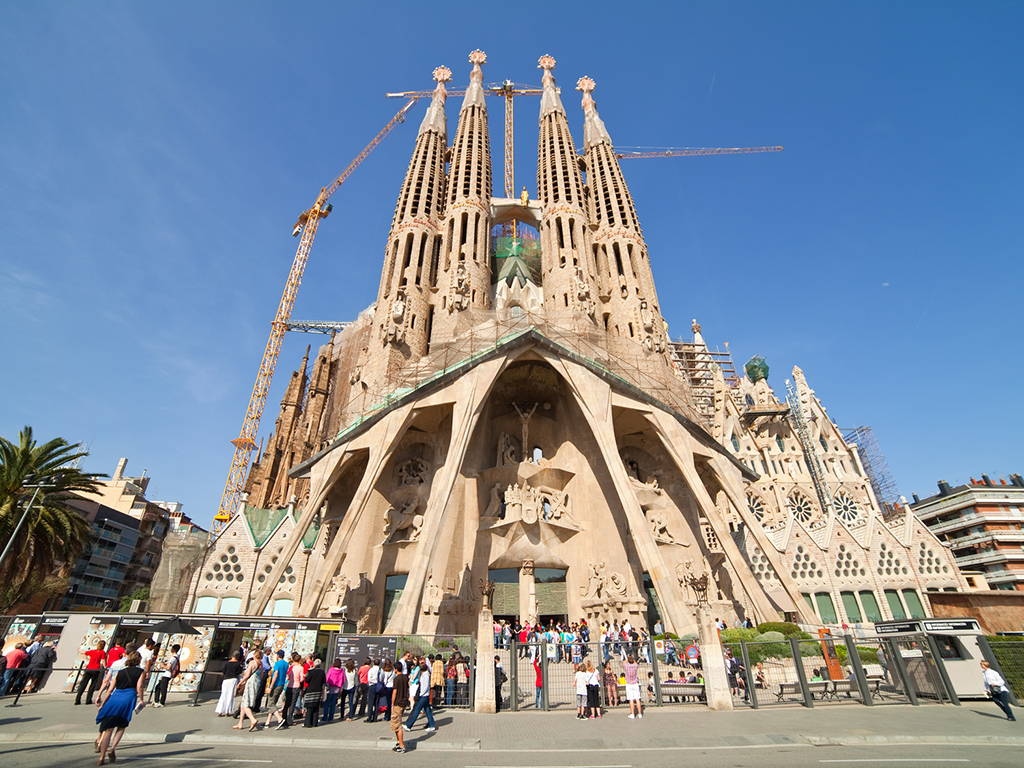
Special Terms & Conditions Sagrada Familia
The opening hours on December 25 & 26, January 1 & 6 can vary.
Last admissions take place 15 minutes before the end of opening hours.
Highlights of the Sagrada Familia
- Free Audio Guide App
- Landmark of Barcelona
- Gaudí‘s life’s work & UNESCO World Heritage Site
- One of the most fascinating architectural constructions in the world
- Crypt and museum can be visited for free
Attractions Near the Sagrada Familia
The music museum, Museu de la Música de Barcelona, is located near the Sagrada Familia.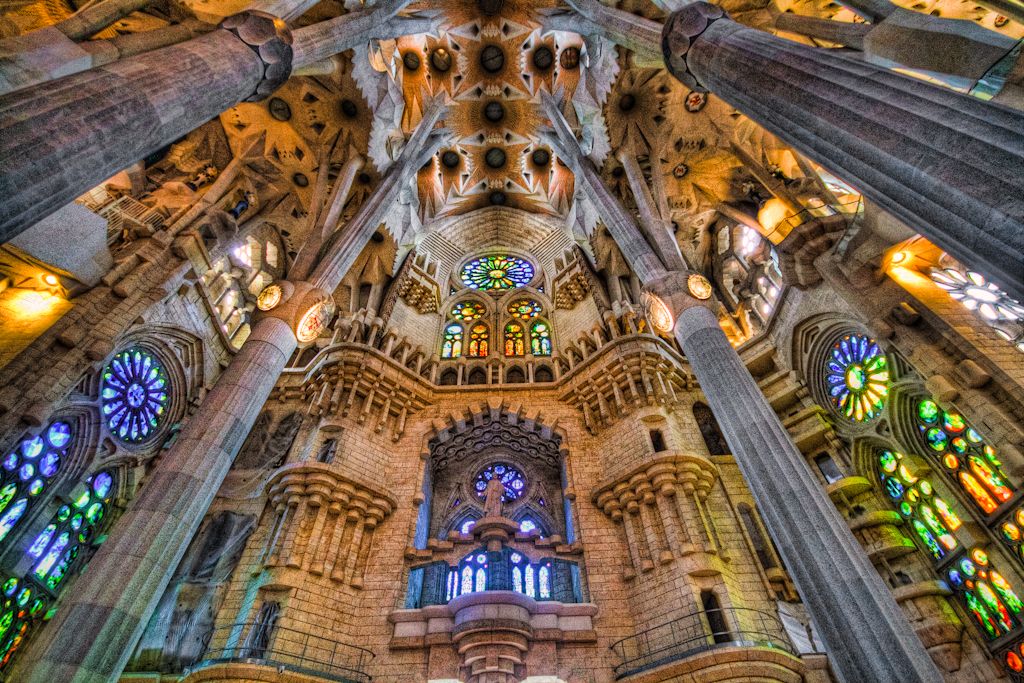
If you are looking for another observation deck with an incredible view, the Mirador de Colom is something you should not miss. The platform is easy to reach and offers you a unique view over Barcelona.
Experience the Sagrada Familia for FREE (if booked) with the Barcelona City Pass and have your ticket into the Sagrada Familia already in your pocket before you even depart for Barcelona.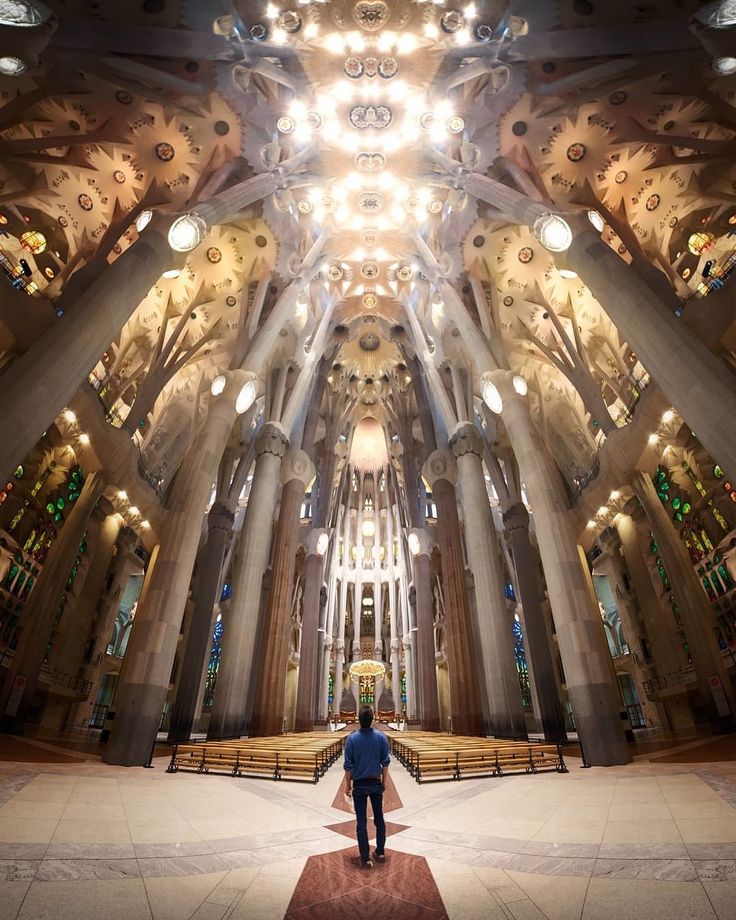
Everything you need to know about the Sagrada Familia
If you plan to visit the Catalan capital, the Sagrada Familia should be at the top of your list of things to see and do during your stay in Barcelona. This church will surprise you, not only because of its massive size, but especially because of its avant-garde architecture, which perfectly shows off the genius of its architect, Antoni Gaudí.
Let’s go and discover the most visited monument in Spain: the Sagrada Familia!
History of the Sagrada Familia
This monumental basilica is known in Spanish as “el Templo Expiatorio de la Sagrada Familia“, which literally translates to the “Expiatory Temple of the Sacred Family”. Although the official starting date of work on the basilica is March 19, 1882, construction truly began over a year later on August 25, 1883.
Originally, it was architect Francisco de Paula del Villar who was in charge of the project, which he envisioned in a classic Gothic style. His plans consisted of a three-nave church with elements such as blister windows, exterior buttresses and a high needle-like spire, all typical to Gothic architecture. But eventually, the work was entrusted to Antoni Gaudí in 1883, aged just 31 years old. Gaudí completely changed the original project and began building his most famous work, which marked his style, made him known worldwide, and allowed him to be known as the master of modern architecture.
From the time he took over the project until his death in 1926, Gaudí worked to build this unique temple that was intended to become a universal masterpiece combining all symbols of Christianity.
The Sagrada Familia is an expiatory temple, that is to say, a place made to commemorate the reparation of sins made against God or the laws of the Church.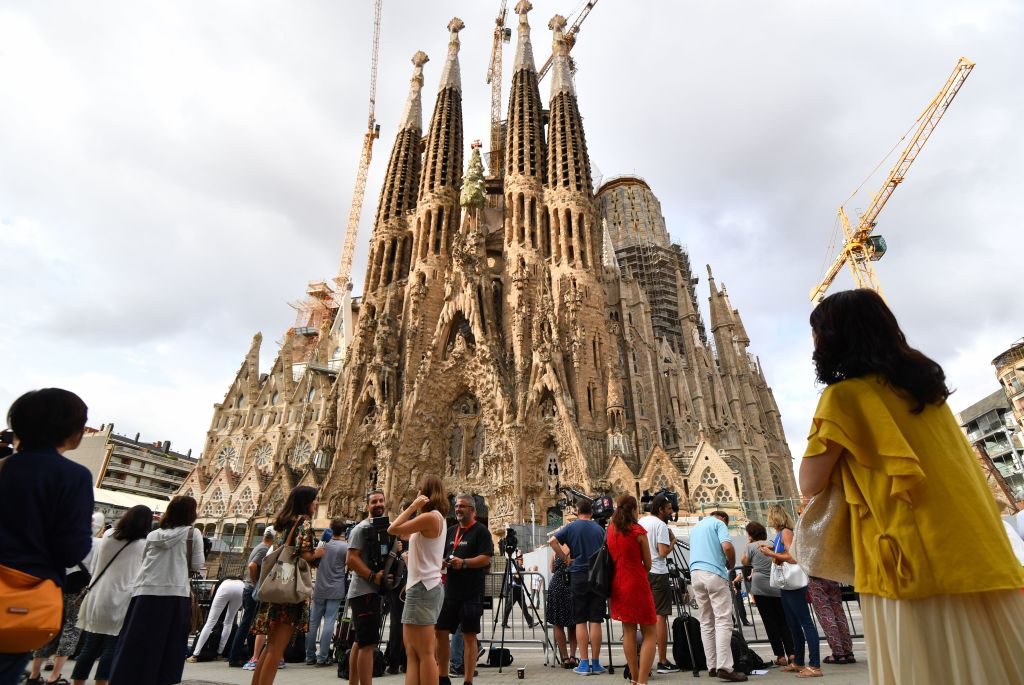
Below is a video that explains what the Sagrada Familia should look like once it is finished:
The work
Gaudí was aware that the construction of the Sagrada Familia would last for centuries, which is why he proposed to focus on the front of the church; he wanted the generation that had begun the work to be able to enjoy a form of completion, as well as inspire future generations to continue the construction of a project that had begun before their time.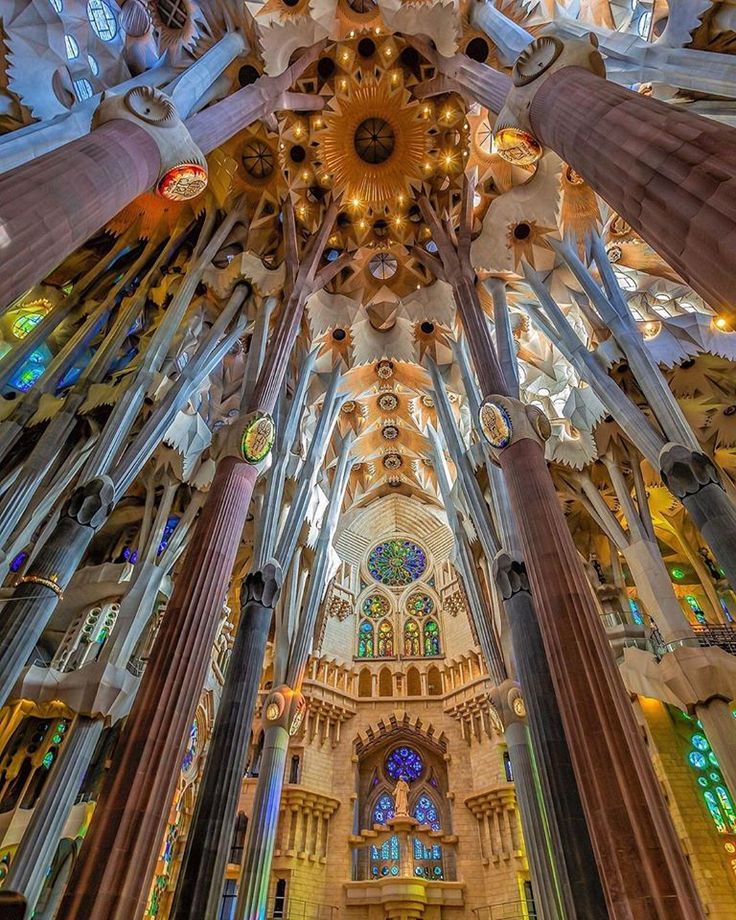
Gaudí tried to define the Sagrada Familia’s construction, but he only completed detailed plans for the three of the most important parts: the central nave, the sacristy and the facade of Glory. These three plans have been used to inspire further construction, including that of other naves and central towers.
- The Nativity Facade
The Nativity facade symbolizes, as its name suggests, the birth of Jesus. Built between 1894 and 1930, it is the only facade to be built almost to completion while Gaudí was alive. Gaudí saw the facade as a representation of nativity, a symbol of life and creation. That is why he introduced its exuberant ornamentation, including animals and tools mixed with symbols, such as the Tree of Life.
Facing the east (north-east to be precise), the facade has three entries that represent the theological virtues: Hope to the left, Faith to the right and Charity at the centre, along with the Door of Jesus and the Tree of Life.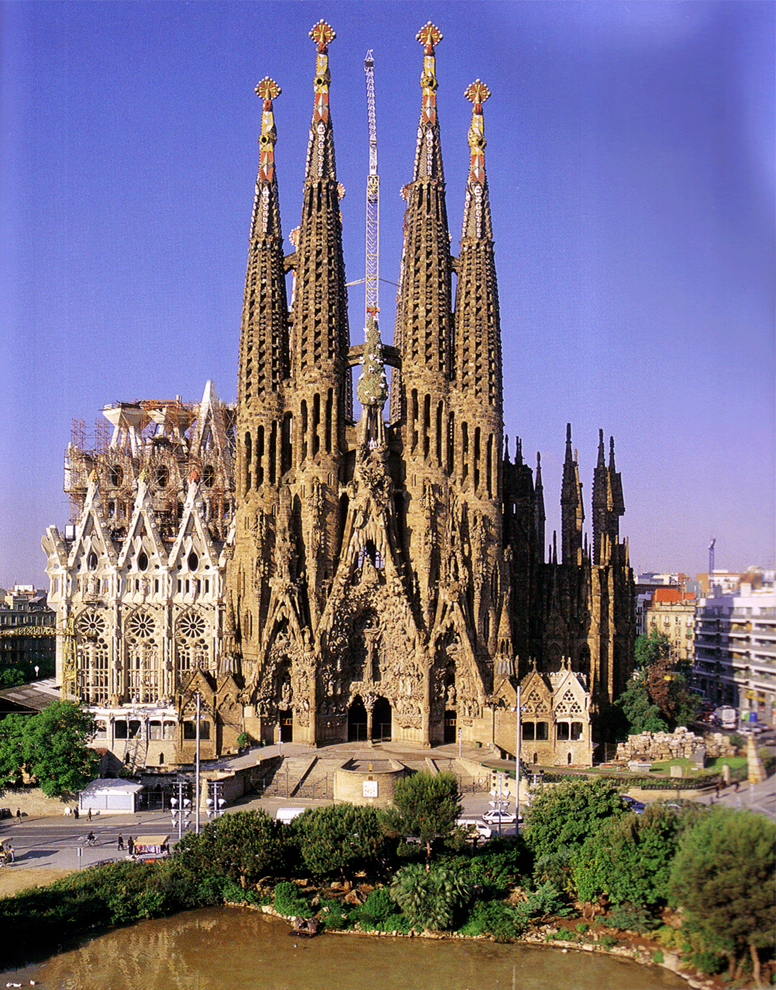
- The Passion Facade
Work on the Passion Facade began in 1954 and it was completed in 1976, its construction guided by drawings made by Gaudí. Decorative work was carried out after its initial completion.
As its name suggests, this facade is dedicated to the Passion of Christ, which explains its simplicity, unadorned and with bare stone.
Gaudí described his design of the Passion Facade as follows: “Some will find this door too extravagant; I wanted it to impose fear. To achieve this, I did not avoid shadows, motifs coming in and out, and everything to gain a dark effect. I am ready to sacrifice this construction, to cut the columns to give an idea of the cruelty of sacrifice.”
- The Facade of Glory
The Facade of Glory will be the largest and most important of the three facades, because it is the one that will give access to the basilica’s central nave.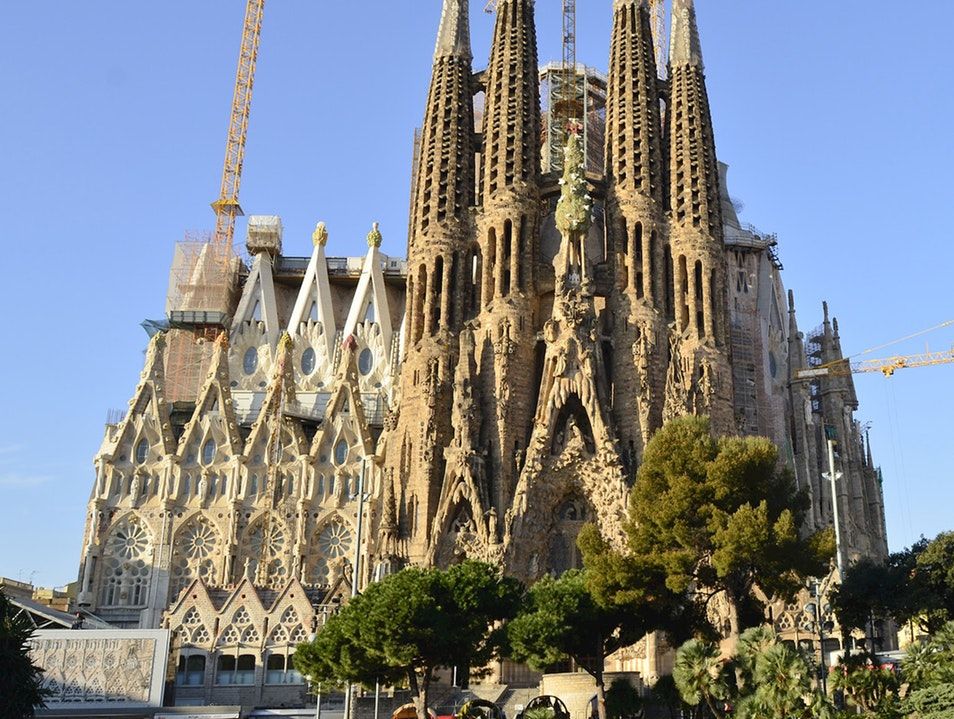
This facade is dedicated to the heavenly glory of Jesus and represents his rise to heaven. Knowing that he would not see the beginning of this facade in his lifetime, Gaudí drew only a few sketches showing his general ideas and plans: representations of Death, Final Judgment, and Glory, as well as Hell for anyone that deviates from God’s path.
The bell towers that remain to be built will be dedicated to St. Andrew, St. Peter, St. Paul and Jacques d’Alpheus.
- The interior
Although the outside of the Sagrada Familia is a work of art in itself, we must not forget to mention its interior. For those who have the opportunity to visit, the interior is surprising due to its magnitude, light and decor, and because this incredible monument is far outside the norm. Furthermore, as with the exterior, the interior has great religious and symbolic significance, based on the Gospels and the book of the Apocalypse.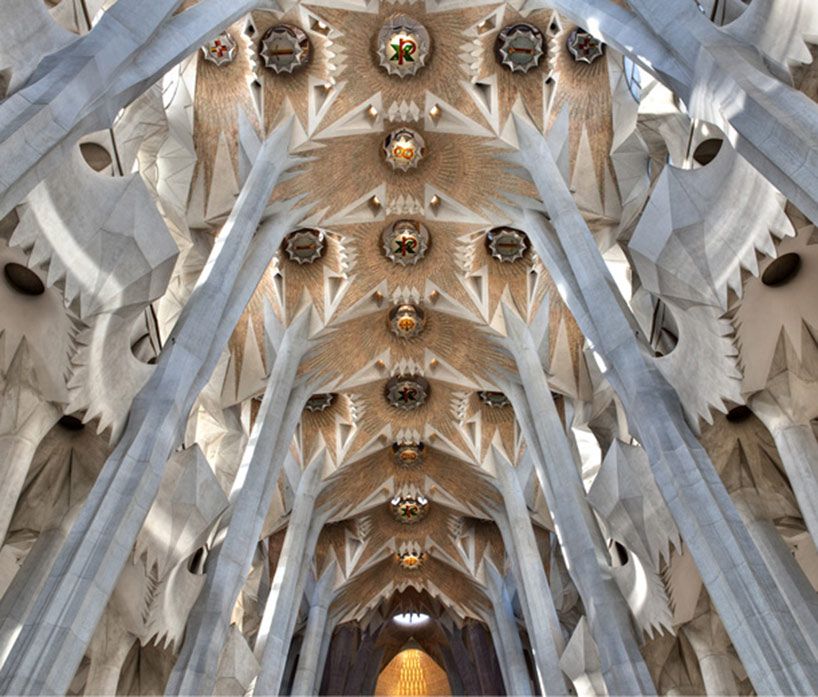
The interior of the Sagrada Familia is also strongly marked by Gaudí’s personal style and inspired by nature. To avoid the use of Gothic buttresses, he created columns shaped like tree trunks, giving the feeling of being in a forest rather than inside a church.
The ground plan of the Sagrada Familia is made up of a classic Latin cross comprising a nave of five ships (nave flanked by double collateral sides) opening onto a transept with three naves, and an apse with a large ambulatory. It opens onto seven chapels and two spiral staircases, which give access to choirs that surround the apse.
The five central naves measure 90 metres long and 60 metres transept. The central nave has a width of 15 metres and 7.5 metres collateral, giving it a total of 45 metres wide. Regarding the transept, the width of the cross is 15 meters.
With regard to the arches, they have a unique shape made up of perforated keystones to allow for the arrival of natural heat.
The Sagrada Familia in numbers
- 14,000 people can fit inside the Sagrada Familia
- 4500 m²
- 170 metre high central tower dedicated to Jesus (the tallest religious building in the world)
- 12 bells to represent the 12 apostles of Jesus
- 120 metres long and 90 metres wide, the size of a football field
- More than 2.5 million visitors a year
Practical information
The Sagrada Familia is open:
- November to February from 9:00-18:00
- April to September from 9:00-20:00
- October to March from 9:00-19:00
- On 25 and 26 December and 1 and 6 January from 9:00-14:00
Ticket sales stop 15 minutes before closing time
There are several tour prices:
- Sagrada Familia with a guide: €19.
50
- Sagrada Familia with a guide and tower visit: €24
- Sagrada Familia with an audio guide: €19.50
- Sagrada Familia and tower visit with an audio guide: €24
- Sagrada Familia and tower visit: €19.50
- Sagrada Familia and Gaudi House Museum (Park Güell): €18.50
- Sagrada Familia visit: €15
- Gaudi House Museum (Park Güell): €5.50
Admission is free for the friends of the church, children under 10, persons with an accredited disability of 65% or higher with an attendant.
The Sagrada Familia is the most visited monument in Spain and it is strongly recommended that you buy your tickets online before your trip to avoid long queues.
How to get there
La Sagrada Familia is located in the centre of Barcelona, with the street address Carrer de Mallorca 401 (N 41º 24 ‘283 “| E 2º 10’ 486”).
It is possible to get there using public transport:
- Metro: L5 and L2, Sagrada Familia station
- Bus: 19, 33, 34, 43, 44, 50, 51, B20 and B24.
Additional information
Here are other travel articles about Barcelona that could interest you and help you prepare for your stay in this beautiful city.
– Cheap Eats in Barcelona: tips for eating cheaply in Barcelona
– 48 Hours in Barcelona: what to see and do in Barcelona over a weekend
– The Ultimate Gaudí Guide: a guide to known and unknown Gaudí buildings in Barcelona
– Barcelona city guide: Gràcia, an independent ‘city’: visiting Barcelona’s Gràcia district
– Barcelona’s Palo Alto Market caught on Instagram: things to do at Barcelona’s hipster market
– BYOB: Bring your own bike (into Barcelona’s bike-friendly bars): a guide to bike-friendly bars, cafés and restaurants in Barcelona
– The genius of Gaudí: Casa Batlló, Barcelona: a Barcelona must-visit, Gaudí’s Casa Batlló
– Everything you need to know about Gaudí’s Park Güell in Barcelona: the title says it all
Sagrada Familia in Barcelona
Tags:
travel, our travels, Spain, cities, Barcelona, Europe, Catalonia
Sagrada Familia – a temple in Barcelona (Temple Expiatori de la Sagrada Família), is an incredible building, and in popularity has long been equaled with the most visited places in the world.
How to buy tickets for the Sagrada Familia without waiting in line
We strongly recommend that you purchase tickets online in advance. You don’t even need to print them, just show the tickets on your phone. Everything is done to make it convenient and fast. Otherwise, a 2-hour line at the cashier awaits you. It is necessary to choose a time interval and this does not mean that you must arrive at the exact time. It is enough to be in place approximately in the middle of the interval.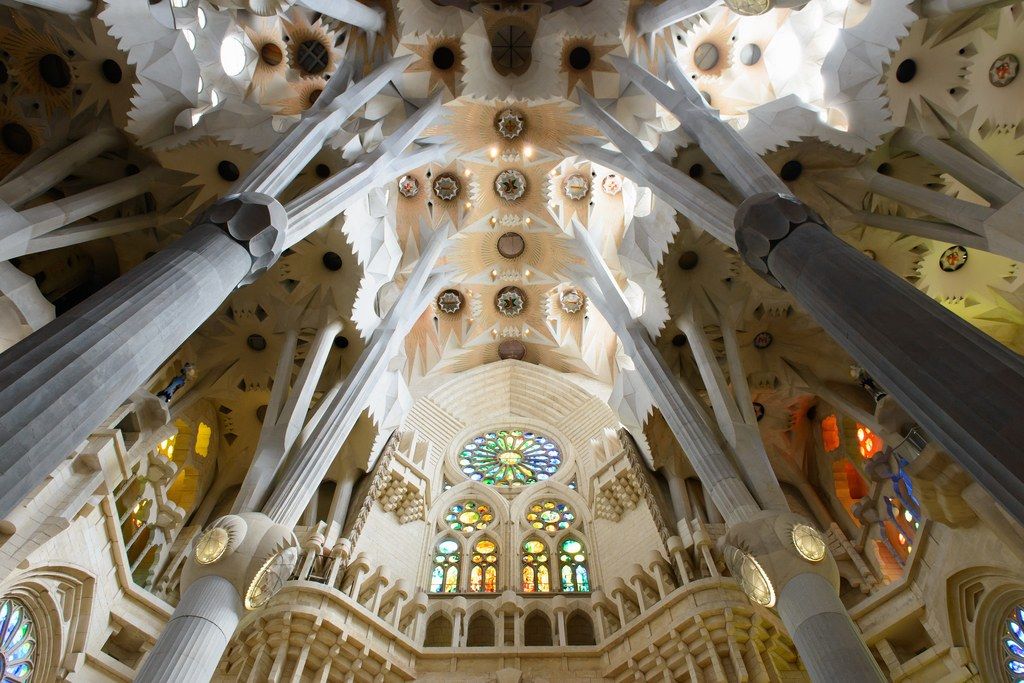
How to get to the Sagrada Familia in Barcelona
1. By Metro : Sagrada Familia (Blue Line, L5) and (Purple Line, L2). At the Sagrada Familia.
2. Bus Hop On, Hop Off.
3. On foot . And it will be a cool walk (our option).
4. And, finally, a great bonus for fans of sightseeing double-decker buses – they definitely stop here!
Sagrada Familia opening hours
October to March: 09:00 to 18:00.
April to September: 9:00 am to 8:00 pm.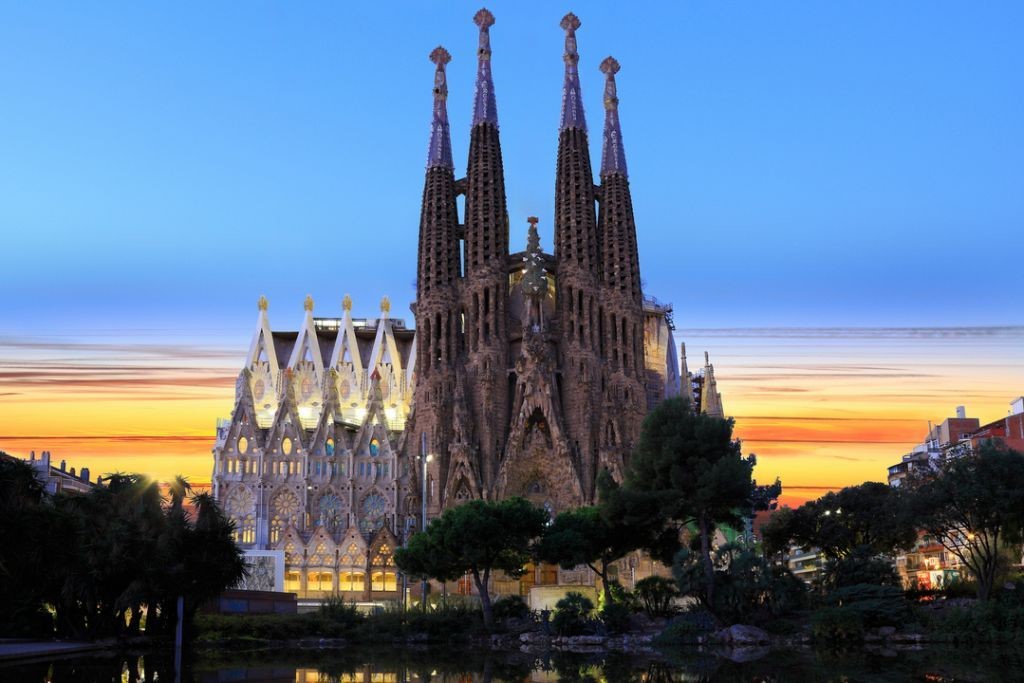
25 and 26 December – 1 and 6 January: from 9:00 to 14:00.
Construction of the Basilica of the Sagrada Familia
As you know, the Sagrada Familia temple began to be built in 1882 with donations from citizens, and since 1883 the construction was led by the most famous architect of Spain Antonio Gaudí, who devoted his whole life to this project, spent all his money on it, already a huge fortune at that time and died in poverty under the wheels of the first tram in the city, when, walking across the tracks, he was in the depths of his thoughts. This brilliant architect built the most famous houses in Barcelona. You can see his lanterns and stone shops on the streets of the city, the most famous Park Guell in the world and much more. But it was this temple that became the work of his whole life, he devoted most of it and all his free time to it. For the first time in history, he applied completely new principles of construction and many skeptics believed that the temple would collapse.
Despite their gigantic size, they look elegant, as the temple has an incredible height of 172.5 meters. In section, the columns have the shape of multi-pointed stars, which makes them lighter and stronger at the same time.
It became a mystery to me how it is possible not only to come up with all this, but also how difficult it is to arrange the lamps so that they emphasize the complexity and beauty of the relief in the most advantageous way!
Basilica’s stained glass windows also emphasize the reliefs and add bright spots of color that change depending on the brightness of the sun’s rays. If you stop for a while, looking at them and the columns nearby, you will see that everything seems to be moving when the clouds cover the sun, and then open it again and then it seems that the forest of columns is moving, like the trees in the forest from the wind.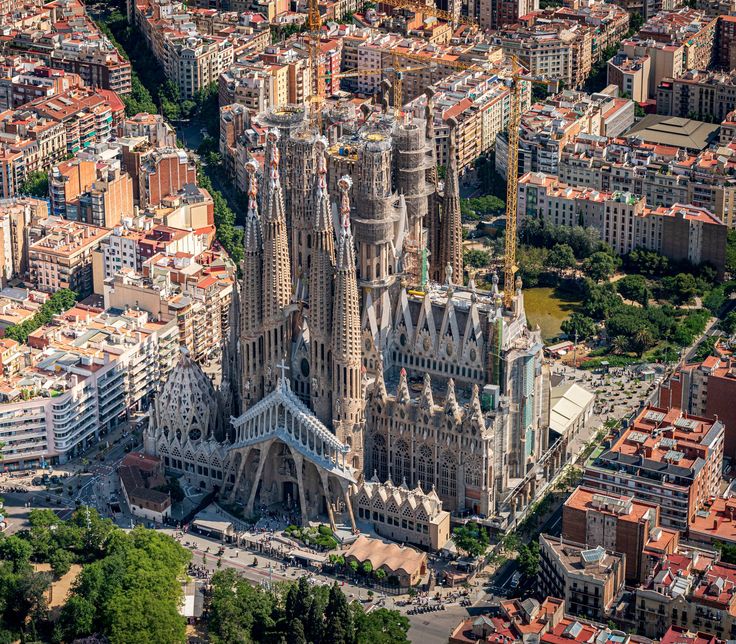
You will walk between the columns, watching the play of light and you will definitely notice how numerous tourists behave, who open their mouths and are stunned by this “living stone forest”.
As you know, the Sagrada Familia has an old facade by Gaudi, which is filled with sculptural compositions from the Bible on the theme of the Annunciation.
All sculptures were made according to his sketches, and posed by living people, who, of course, have long been gone.
The modern facade, which is being completed now, has simpler planes, but is also architecturally complex. On my very first visit, such an incredible combination and piling up of eras seemed strange to me, it seemed that the whole temple should be made in the style of Gaudi, not only architecturally, but also with reliefs similar to his work. But later I realized that this was also cool, since the construction of the temple was already headed by several architects and the basilica is a reflection of several eras at once.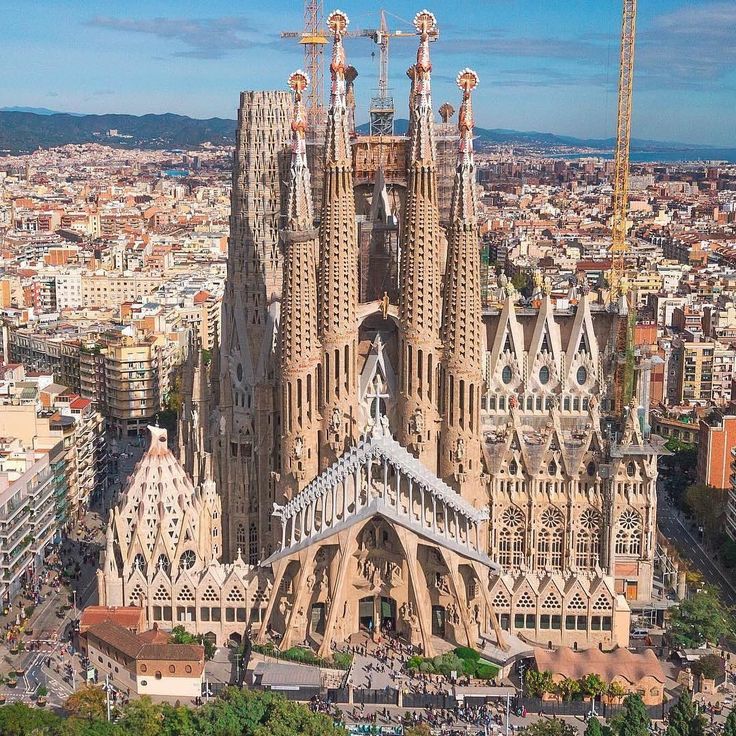
Tags:
travel, our travels, Spain, cities, Barcelona, Europe, Catalonia
Sagrada Familia Barcelona. Info 2022
An incredible marvel of the architectural genius of Antoni Gaudí, the Sagrada Familia is Barcelona’s top attraction, visited by over 3 million tourists a year. The construction of the temple has been going on for 140 years, and they promise to complete it by 2026.
Types and cost of tickets to Sagrada Familia :
Current prices for 2020:
Regular entrance ticket – 20 euros
Entrance ticket + audio guide (available in Russian) – 26 euros
Entrance ticket + guided group tour
(in English or Spanish) – 26 euros
Entrance ticket + audio guide + climb to the tower – 33 euros
Ticket sales end 30 minutes before the closing of the Sagrada Familia
(Ticket looks like it is shown in the image)
Sagrada Familia official website
http://www.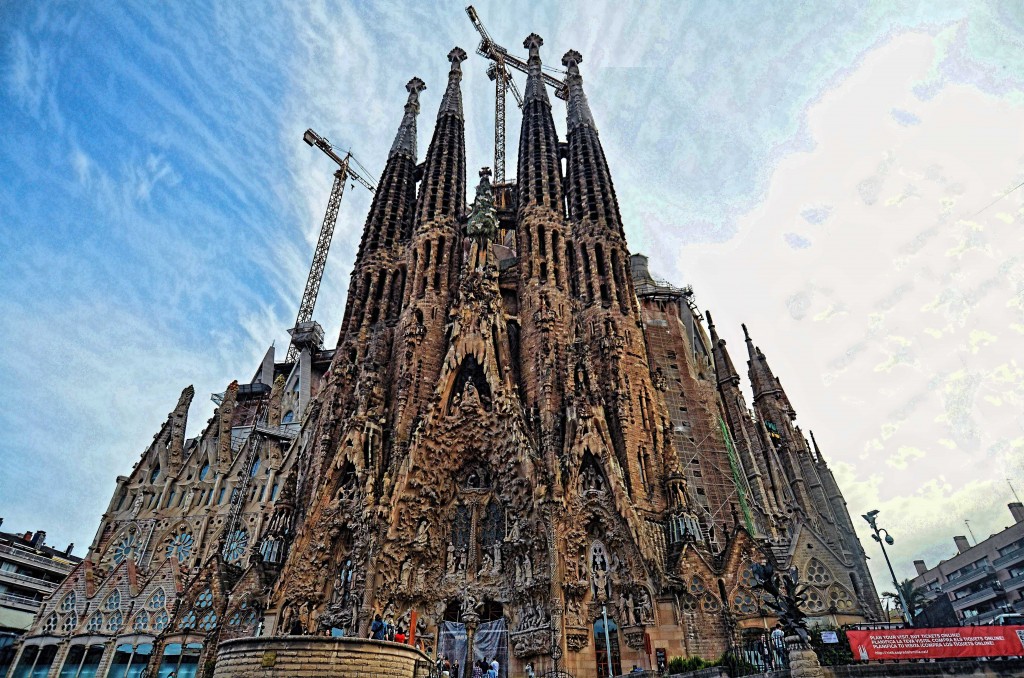
Sagrada Familia tickets
| BUY |
lia) :
November–February : from 09:00 to 18:00.
March: from 09:00 to 19:00.
April-September: 09:00 to 20:00.
October: from 09:00 to 19:00.
December 25, 26, January 1, 6: from 09:00 to 14:00.
How to get to Sagrada Familia:
Address: Basílica de la Sagrada Família, Carrer de Mallorca 401, 08013 Barcelona
Area: Eixample
Taxi: 10-15 minutes from Plaça Catalunya
Tourist bus: 4th stop on the blue line of line
City buses no. 19, no. 43, no. 34, no. 50, no. h20
On foot: 20 minutes from the Arc de Triomphe, 30 minutes from Plaza Catalunya and about an hour from Park Güell, Sants train station or the sea .
By metro: from Sants station 5 stops (10 minutes) on the blue line L5; if you are in the center or near Plaza Catalunya, it is better to walk 2 minutes to Passeig de Gràcia station.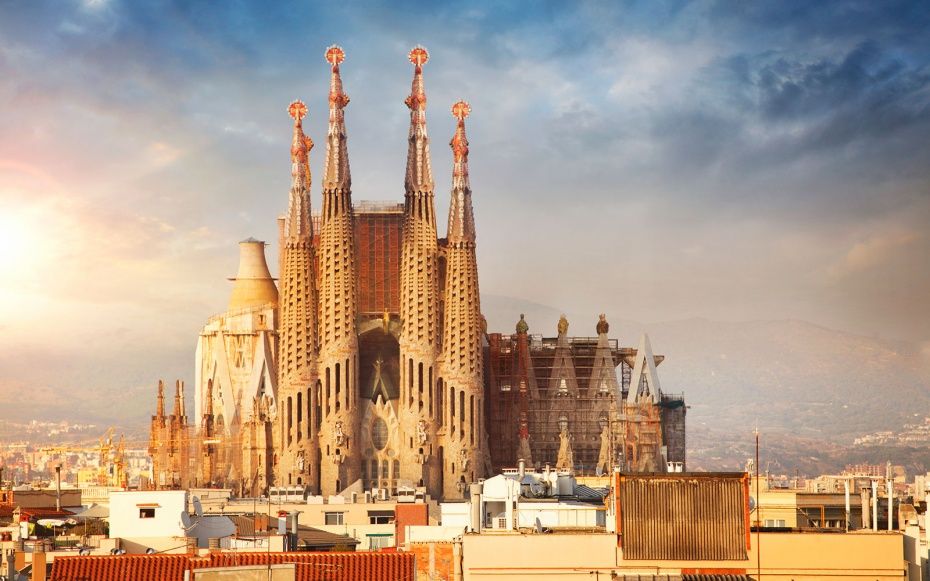
Sagrada Familia Life Hacks
– Entrance tickets must be purchased in advance. Sagrada Familia is ticketed by millions of people and, given the capacity, only a limited number of visitors can visit it every day. Therefore, in the summer, tickets can be sold out a week in advance.
– Tickets for the Sagrada Familia are purchased for a fixed time and day. You are given a 15 minute corridor to enter. It is very important to arrive on time.
– Children under the age of 11 enter the Sagrada Familia free of charge.
– The Sagrada Familia in Barcelona is especially beautiful during the setting sun, the rays of which are delightfully reflected in the stained glass windows. In summer it happens at about 6-7 pm, in winter – at 4-5 pm.
– When you visit the tower, you go up the elevator and find yourself on the bridge between the towers. Stay there for a bit, because then you immediately begin to descend to the exit.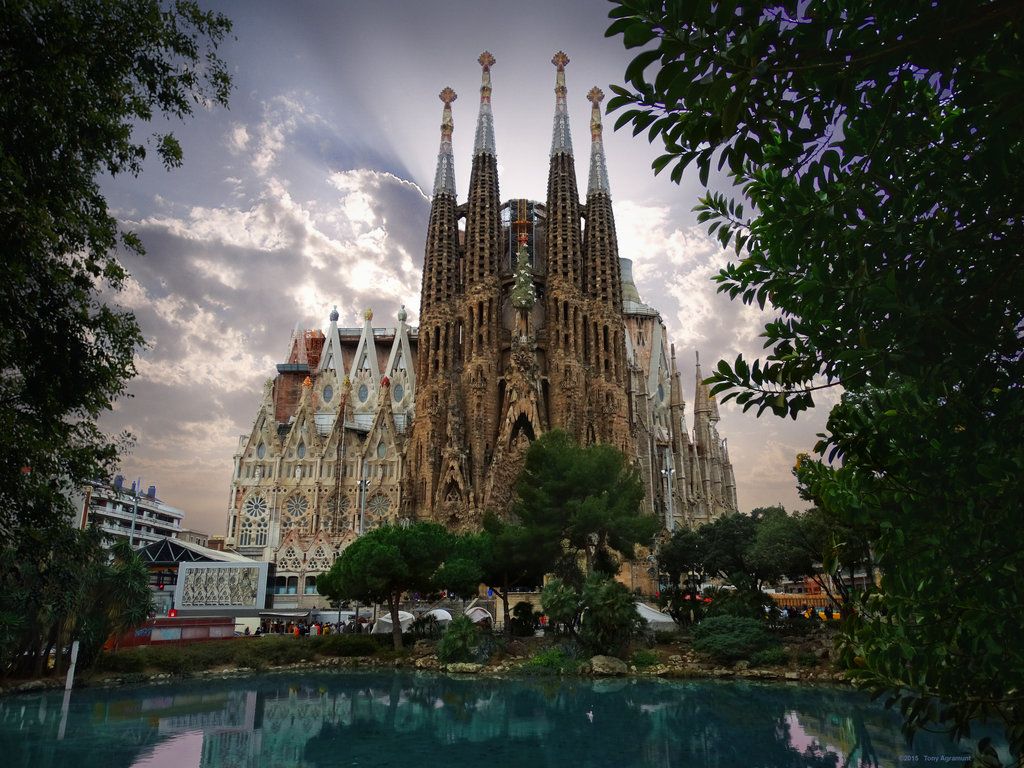
Eat near Sagrada Familia:
Cafe 365
Cheap coffee and sandwiches
Address: Carrer de Mallorca, 22, 08013 Barcelona
Open every day from 6.00 to 22.00
Buenas Migas
Inexpensive snack for adults and children Plaça3 de la Sagrada Familia, 17, 08013 Barcelona
Open every day from 9.00 to 23.00
La Paredeta
Lunch or dinner with seafood0093 Low price supermarket Dia
Carrer del Rosselló, 443, 08025 Barcelona
1 block up Avinguda Gaudi
Attractions near Sagrada Familia:
‘ St. Paul’s Hospital (900 laHospital3 deL97 Santa Creu i Sant Pau)
Distance – 935 meters.
10 minutes by Avinguda Gaudi
Agbar Tower (Torre Agbar)
Distance – 1.3 km
20 minutes by Carrer de la Marina and Avinguda Diagonal
Casa Mila (La Pedrera – Casa Milá) and
Casa Batllo (Casa Batlló)
Distance – 1.

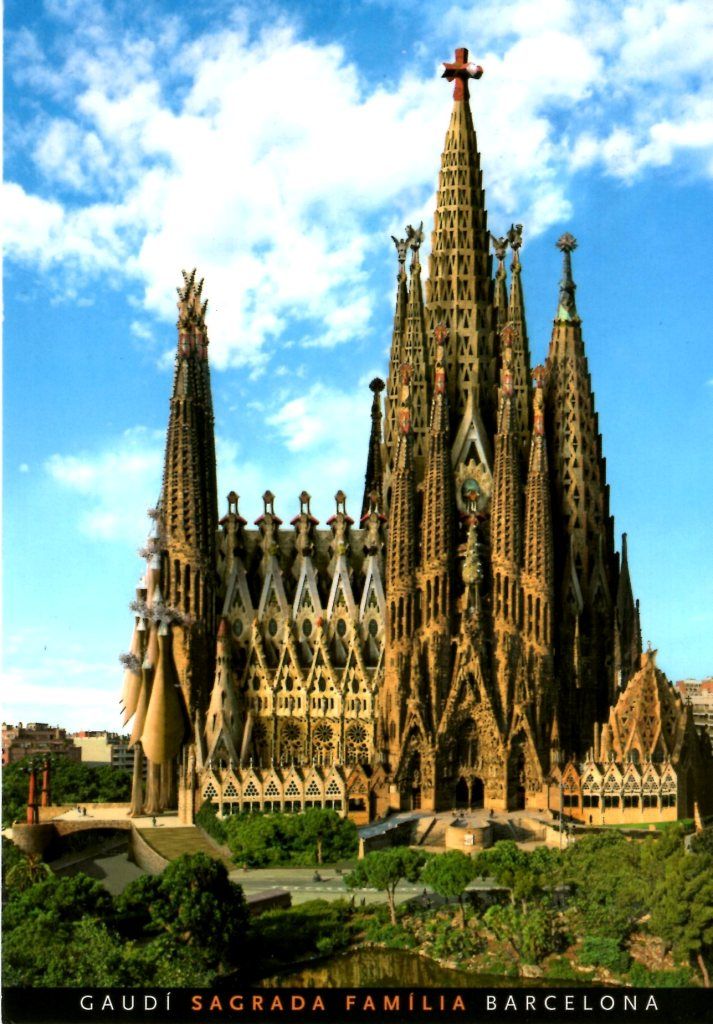 50
50